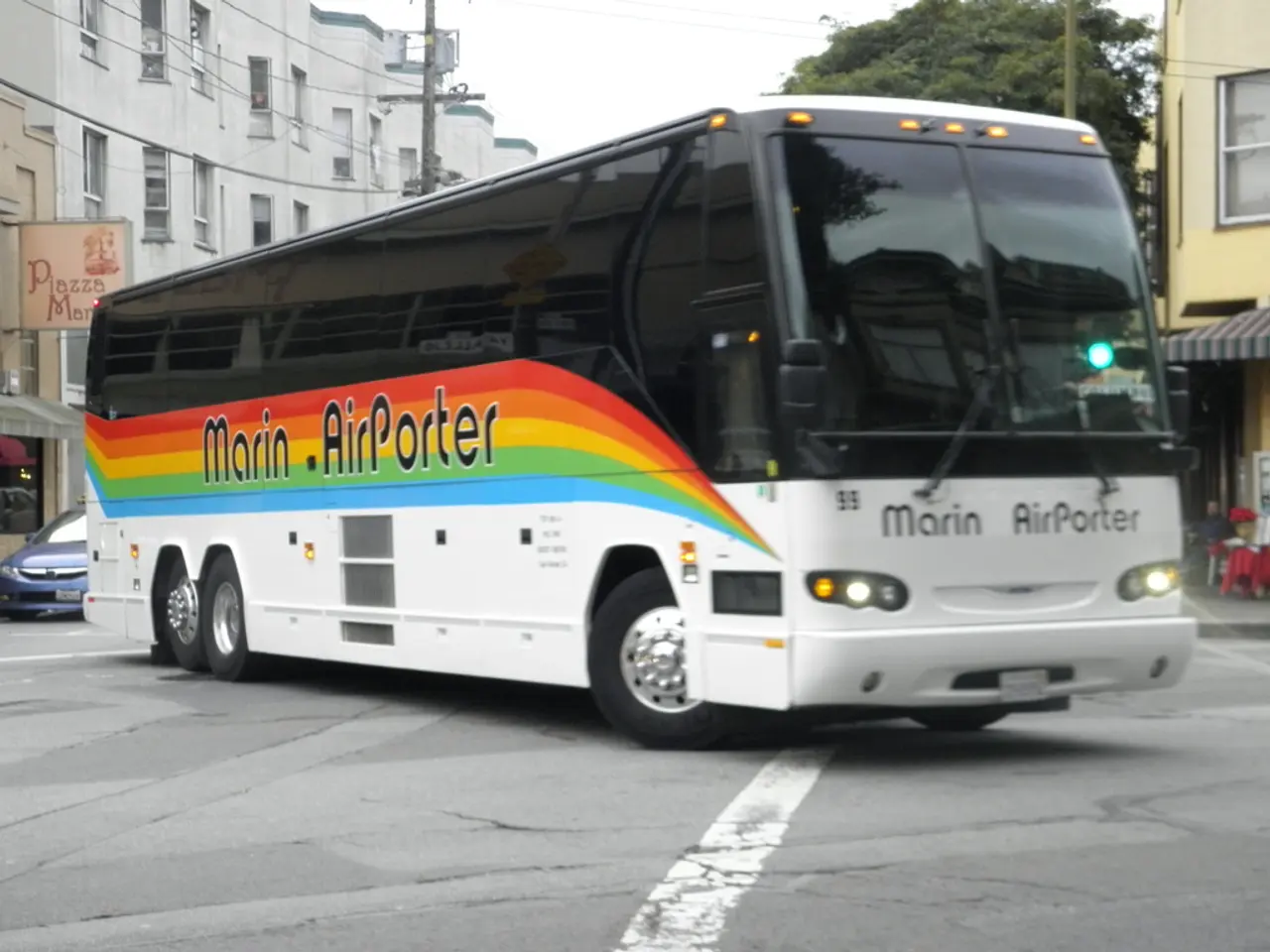T-Mobile's satellite service, T-Satellite, has begun operation within the United States.
T-Mobile's T-Satellite service, powered by SpaceX's Starlink, is set to transform the way people stay connected in rural, remote, or disaster-prone areas. This innovative service enables direct-to-cell satellite texting for most smartphones without the need for special hardware, eliminating mobile dead zones in the US[1][3][4].
Key Features of T-Satellite
- Direct-to-cell SMS and emergency texting allow users to send texts even in areas lacking cell towers.
- The service works on most phones made in the last 4 years across multiple brands, including iPhones (iPhone 14 and later), Samsung Galaxy, Motorola, and T-Mobile models—over 600 smartphone models supported[1][5].
- There's no need to point the phone at the sky; texting works like normal with the phone in your pocket[3].
- T-Satellite is available to T-Mobile, Verizon, and AT&T customers, either free for T-Mobile’s premium Experience Beyond or Go5G Next plans or $10/month for others[1][4].
- Beta testing started in December 2024 with nearly 1.8 million users signed up, currently offering nationwide coverage except in certain government-regulated areas like borders or science zones[1][3][4].
Comparison with Competitors
| Aspect | T-Mobile T-Satellite (Starlink) | Apple Satellite SOS (Globalstar) | Verizon / AT&T Satellite Service | |------------------------|----------------------------------------------------|-------------------------------------------------------|-------------------------------------------------| | Satellite network | SpaceX Starlink constellation (657 satellites) | Globalstar satellite system | Uses T-Mobile’s Starlink service (shared) | | Service type | Direct-to-cell SMS, emergency texting | Emergency SOS and location sharing, expanded texting | Direct-to-cell satellite texting (sharing T-Satellite)[1][2] | | Device compatibility | Most smartphones from last 4 years (>600 models), incl. iPhone 14+ | Limited to iPhone 14 and newer for SOS and texting | Same as T-Mobile service (using Starlink) | | Pricing | Free with T-Mobile premium plans, $10/month for others| Included with iPhone purchase (no additional fee) | $10/month (same as T-Mobile), available to their customers[1][4] | | User experience | No special hardware, no need to aim phone | Requires iPhone with satellite antenna, emergency-focused | Similar to T-Mobile, no special hardware needed | | Features | Texting, emergency communication | SOS emergency, location sharing, some texting/calling| Texting, emergency communication | | Coverage | Nationwide US coverage except restricted zones | US and some international areas | Nationwide US (via Starlink satellites) |
A Practical Solution for Satellite Texting
T-Mobile’s T-Satellite service stands out by offering broad device support, direct-to-cell SMS texting with no new hardware, and multi-carrier availability (T-Mobile, AT&T, Verizon) at a low monthly price or free on certain T-Mobile plans. Apple’s service is more tightly integrated but focuses on emergency SOS via satellite and is limited to specific iPhones. Verizon and AT&T leverage the same Starlink-powered network but generally offer it at the same pricing tier as T-Mobile and may have similar device compatibility[1][2][5].
The ease of use—no need to point at satellites and texting from the regular messaging app on many phones—along with its multi-carrier inclusion and Starlink infrastructure provides an advanced, practical solution for satellite texting and emergency communication across the US where cellular coverage is unavailable[1][3][4].
T-Satellite could be a game changer for outdoor enthusiasts, travelers, emergency responders, or anyone who needs a way to reach someone when cell coverage disappears. The service supports over 60 devices, including Apple's iPhone 14 and later and Google's Pixel 9. More satellite-to-phone services, such as those offered by Verizon, AT&T, Apple, and Google, have more restrictions and are only available for specific scenarios.
Performance of T-Satellite may vary in areas with high Starlink usage. The service requires a clear view of the sky to function properly and can be affected by dense tree cover or buildings. The service currently supports text messages, including 911 texts, and the ability to share a temporary location link when out of standard coverage zones. Unlike Verizon and AT&T, T-Mobile's T-Satellite service is not tied to select phone models; it supports carrier-unlocked devices with eSIMs and satellite connectivity.
T-Mobile's T-Satellite service, powered by SpaceX's Starlink, officially went live across the U.S. on July 23. During the promotional period, the service costs $10 per month, which will increase to $15 later. The service turns the idea of "no service" into something that no longer leaves you stranded. However, it's important to note that the service may not be suitable in highly populated urban areas or under heavy tree cover.
- The T-Satellite service, powered by SpaceX's Starlink, not only revolutionizes rural and disaster-prone communication but also ventures into the realm of finance, making satellite texting affordable for T-Mobile customers, with the service costing $10 per month for those not on premium plans.
- The technology aspect is significantly broadened with the T-Satellite service, as it supports direct-to-cell SMS texting on most phones made in the last 4 years, spanning a range of brands from science giants like Apple to industry leaders like Samsung and Motorola.




